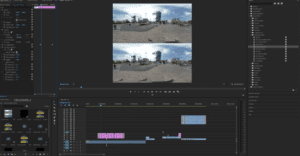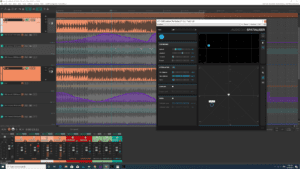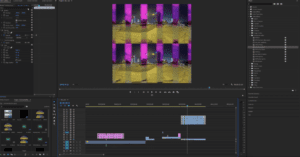This semester I am very fortunate to work with wonderful teachers and classmates on a VR video project which our team named “Century in a Minute”. As an one-minute VR rephotography of the street scene on Century Avenue, the project is far from perfect, however, it was indeed a great learning experience that opens a door to the VR production and experiment world. I was able to learn how to shoot 360 with Insta 360 Pro 2, our latest 8K VR camera, edit it with Premiere Pro tools that are tailored for VR videos (including the amazing “Immersive Video” effects). I also tried the Facebook 360 Spatial Audio Workstation using Reaper, which enables the spatialization of our background music. Last but not least, it was great to have IMA show participants trying it on with a portable Oculus Go device and observe people’s reactions. Most of these experiences were unexpected beforehand but definitely rewarding looking backward.

What works well in our production is the application of Premiere Pro VR toolset. We applied the plane effect to titles so as to avoid distortion, and glitches and blocks to transit between scenes. The automation completed by the software. such as matching content on both eyes’ views yet allowing for discrepancy to create sense of depth, is really a boost to productivity. In the meantime, crop and color hue filters were used in our project and after working with the over-under footage we have for a few weeks, I started to view VR video editing not as mysterious and intimidating, but just like any other videos with exciting new opportunities to explore.

What didn’t work as well as I would expect is the shooting. Taking into account weather and hardware malfunctioning, we had four shoots excluding preparatory shoots without VR camera. Especially when we want to do rephotography, the requirements on exact location and angle posted a huge challenge. On the last two shoots, we figured out the xyz position of the camera correctly, however the orientation of the camera is 180 degrees different from the previous shoot. The preview from phone app wasn’t showing exactly what will come out after stitching and given enough time, a new shoot taking into account the full 6 dofs might produce better day and night matching than we currently achieve. But the process of panning and restitching the video post-production also taught us good skills, so it was a rewarding experience after all.
